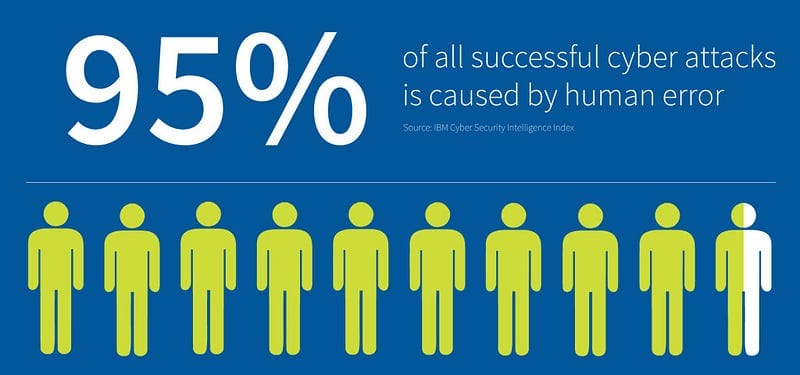The Human Factor in Cyber Security: Why It Matters
While many organizations invest heavily in cutting-edge security measures, the human factor remains a significant vulnerability in…

While many organizations invest heavily in cutting-edge security measures, the human factor remains a significant vulnerability in cybersecurity.
This article will explore why human factors represent the weakest component in cybersecurity and how they can be addressed to strengthen overall security.
The Human Factor: Why It Matters
The human factor refers to the role that people play in cybersecurity, including their actions, decisions, and behaviours that can directly impact the security of information systems. Several key reasons include:
a) Lack of cybersecurity awareness and training: Many users lack basic knowledge about best cybersecurity practices, leading to poor security hygiene and increased vulnerability to attacks. With proper training, users are often aware of the potential consequences of their actions.
b) Social engineering: Cybercriminals have become increasingly adept at manipulating human psychology to gain unauthorized access to sensitive information. Phishing, pretexting, and baiting exploit human emotions and trust to trick users into revealing their credentials or downloading malicious software.
c) Insider threats: Disgruntled or negligent employees can cause significant damage to an organization’s cybersecurity. Insiders may have access to sensitive information and systems, allowing them to cause harm from within.
Strengthening Cybersecurity through Human Factors
Addressing the human factor in cybersecurity involves a multifaceted approach that combines technology, education, and policy. Here are some key strategies that organizations can adopt to mitigate human-related risks:
a) Security awareness training: Regular training sessions should be conducted to educate employees about the latest cybersecurity threats, best practices, and organizational policies. This will help users become more vigilant and reduce the likelihood of falling victim to cyberattacks.
b) Create a cybersecurity culture: Organizations should foster a security culture by promoting transparency and open communication about cybersecurity issues. Encouraging employees to report potential threats and incidents without fear of repercussions can lead to quicker detection and response.
c) Implement strong access controls: Use a combination of role-based access control, multi-factor authentication, and password management to limit the potential damage caused by insider threats. Regularly audit user access rights to ensure that only necessary permissions are granted.
d) Human-centric security technology: Employ security solutions focusing on user behaviour, such as User and Entity Behavior Analytics (UEBA). These tools can help identify unusual or suspicious activities that may indicate a compromised account or insider threat.
While technology plays a crucial role in the cybersecurity landscape, it is essential to remember that human factors remain the weakest component in the cybersecurity space.
By recognizing and addressing these vulnerabilities, organizations can significantly strengthen their overall security posture and reduce the risk of data breaches and cyberattacks. Through a combination of education, policy, and human-centric technology, it is possible to create a more secure digital environment for everyone.
Follow me on Medium, LinkedIn, and Twitter. Let’s connect!
I am looking forward to hearing from you!
All the best,
Luis Soares
CTO | Head of Engineering | Fintech & Blockchain SME | Web3 | DeFi | Cyber Security
#cybersecurity #security #risk #riskmanagement #people #cyberattacks #defense #softwareengineering #secure #connection #privacy #content #security



